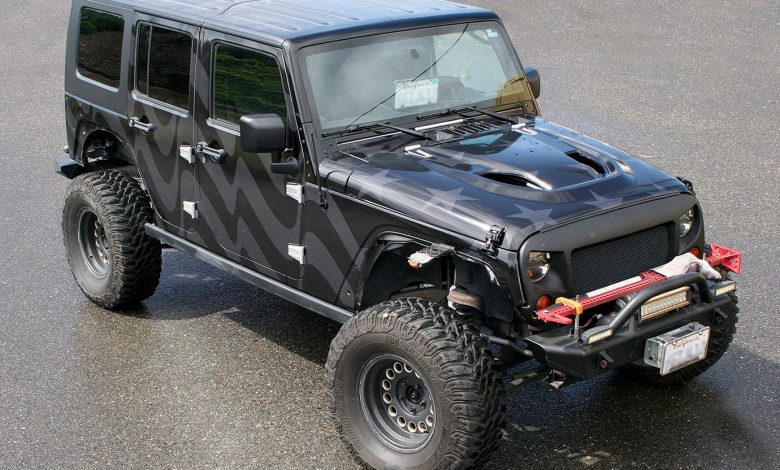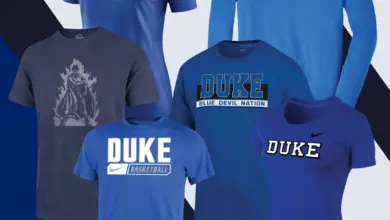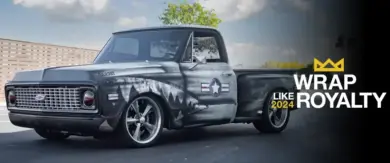Pricing Pitfalls to Avoid When Quoting a Wrap
Achieve accurate quotes by avoiding pricing mistakes
Over the years, we’ve quoted hundreds of wraps, and each one is unique. There isn’t a set cookie-cutter wrap price that can be thrown out accurately; each vehicle must be evaluated in order to create an accurate wrap quote.
That’s not to say that similar vehicles or coverage options can’t be pre-estimated and kept on hand. In fact, we do this with smaller transit vans and large commercial vans. We’ve broken down a range of coverage options for each vehicle type, from spot graphics to full coverage, with a price range including installation. We use these sheets as a sales tool, but the customer’s actual vehicle is still assessed and custom quoted.
Failing to assess the vehicle and do a bit of due diligence may cause you to stumble into a few pricing pitfalls. These mistakes can cause you time and frustration but most importantly, money.
Customer service
Pricing vehicle wraps is a process. Starting right from the beginning with the customer, mistakes can be made that can affect wrap sales and profits.
One of the easiest ways for a sign shop to succeed and to make that next wrap sale is to respond to the customer. Once the vehicle has been assessed, and pertinent information has been gathered, the customer should receive a quote within 24 hours tops.
Vehicle wraps involve big dollar amounts, and it’s important that the customer is briefed on the options available to them. If a customer comes in and asks for a quote to wrap their van and they’re given a price of $4,000 without any coverage discussion or price range explanation, they may simply walk out thinking it’s out of their budget.
If that same customer is given a $4,000 full wrap price but then is also offered a half-wrap price for comparison, they may then realize that they have options. Isolating the customer by not finding out their budget or not making it clear that you’ll work within their budget can lose the sale completely.
Pricing games
This is kind of a tricky point to make. While being competitively priced is important, playing pricing games is a time-waster. Based on experience, customers that are overly caught up in the price of the wrap, more than the effectiveness of the wrap or the advertising it can bring, are only concerned with getting the cheapest price and will not become loyal, long-term customers.
The largest discount we’ll entertain on a wrap is 10% off the graphics we quoted. Because we’re thorough during the pricing process, we’re giving the customer our best price from the beginning.
If a customer brings in a written quote from our competition and we’re able to determine that we’re quoting the exact same coverage using the same materials, then we’ll look at price matching. Sometimes a customer just likes to negotiate, and if the price match we’re evaluating falls within that 10% amount, then we’re comfortable working with the customer.
If we are not able to price match, we do make a point of explaining to the customer that, unfortunately we’re not able to confirm that we’re pricing apples-to-apples, and we know that our pricing is based on our own experience and expertise. We also welcome them to come back if for any reason the other company is not able to take care of them. Keeping a positive rapport with the customer may pay off on future projects.
Measure mistakes
Vehicle templates are great tools to use throughout the wrapping process but gathering accurate measurements of the vehicle you’re wrapping is important as well. Misjudging sizes or making mistakes in noting measurements can cost you big time.
A mis-measured vehicle means that you’ve not only under- or over-estimated the wrap costs, but if you do produce the job, the graphics will not fit properly. This could lead to reprints and a loss of both material and labor costs.
Flared fenders, overly curved hoods, and angled tailgates are body contours that should be taken into consideration. These areas will not only require additional material when compared to a flat surface, but they may also require additional time to install.
Obstacles
There is a particular Jeep Wrangler that we’ve wrapped a couple of times for a repeat client. When initially assessing this wrap, we did not fully take into account how time-consuming it was going to be to wrap around the large hinges on the doors as well as the hood grates and other body obstacles. In the long run, we spent a lot more time properly wrapping this vehicle than we expected due to an underestimation of the time that would be involved.
As you look over a vehicle, pay attention to any obstacles that overly stick out, have tight areas that you would have to try to tuck around, are not removable, or have plastic or rubber areas that would need to be trimmed around. Also, note any deep contours or compound curves that will affect both material choices and installation time. Vehicles with excessive trimming will also increase your labor time.
Material
Choosing the right material for the application is very important. When you’re facing deep contours on the side of a van, a vinyl with a higher percentage of stretch-such as 3M Envision 480Cv3-will tuck into those contours and stay. Other pieces of vinyl with less stretch are more likely to bubble and fail over time.
By not quoting the correct material from the beginning, you face failure, reprints, and reinstall costs. Trying to install the wrong material for the job also makes the installation take longer, which cuts into your initial labor costs as well.
When quoting a specialty vinyl that is the best option for the obstacles involved in a wrap, be sure to point out to the customer that you’re quoting this material for them. You should also explain why you recommend the material, so the customer is fully informed. If they are price shopping, they will know that you’re quoting a better material for the job.
Design
When quoting vehicle wraps, so much focus is given to the coverage and total square footage as well as the installation that sometimes the design labor is overlooked. When we quote our wraps, we break the pricing into three parts-graphics, installation, and design.
Our design charges are based on what artwork the customer can provide, what artwork we may need to reproduce, and any artwork we need to purchase. If the project will need to include high-resolution artwork that is purchased through a stock photo site, be sure to share these sites with your customer and have them look through the photos until they narrow down what they like.
If you don’t have the customer narrow down the search, you will spend a lot of time searching for images that they may ultimately reject. If the customer prefers you to gather and present options to them, be sure to charge for your time.
We like to talk through design charges with the customer, so they understand what is involved in the design process and realize the costs involved. If the wrap project involves multiple vehicles using the same overall design, we explain to the customer that the initial setup charges get the base artwork in our system, and art fees on other vehicles will be much less.
Vehicle Prep
During the initial vehicle assessment, be sure to take into account emblems, old decals, or vehicle parts that will need to be removed prior to installation. These removals may take just a few minutes or over an hour. Be sure you add extra labor cost to cover these removals.
On a recent trailer wrap, we had relied on photos to quote a partial wrap for our out-of-town customer. Unfortunately, I couldn’t see the abundant silicone that was smeared around every obstacle and across the top and sides of the panels. Because the vinyl won’t stick to silicone, and the silicone wasn’t a neat bead that we could trim around, we had to scrape off as much of the silicone as possible. This oversight cost us a couple of extra hours of labor we hadn’t charged for.
We ask our customers to bring their vehicle in washed to avoid an extra cleaning fee. If the vehicle is waxed or if there is an overspray of tire shine on the body of the vehicle, we will have to spend a lot of time removing it before we’re able to wrap the vehicle. This extra time will have to be billed to the customer.








